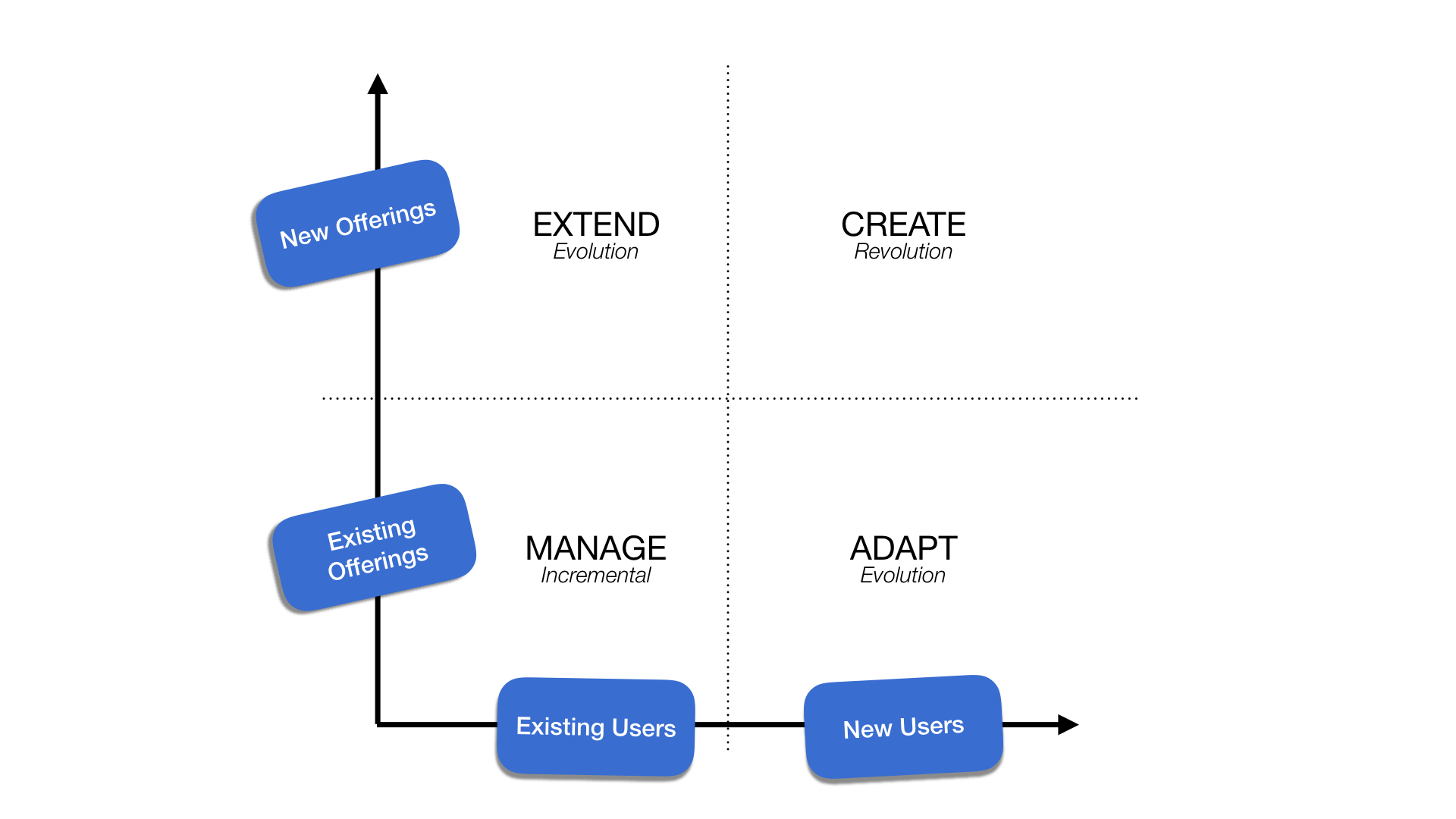Design thinking is all about solving the answer to the right question by having a human centric thought process. Its all about creating experiences and values in the solution that we give to problems identified. Change by design by Tim Brown, is one of the few books that talk about how design thinking can be instrumental when finding solutions. Innovation that become experiences we enjoy.
In that book, there was one quote that grabbed my attention for a very long time.
People do not solve problems, they evolve.
The ways to grow matrix is a simple tool that anyone can use to check their growth. It was designed by Diego Rodriguez and Ryan Jacoby from IDEO. The matrix can be your first critique when you are about to start your next venture, or when you are about to change operations in your company, or even when you are thinking about how to do your next assignment. This matrix will be handy to exactly see where your idea stands and to see if it will actually take off and soar great heights.
The horizontal axis moves from existing users to new users. On the vertical axis we plot in innovation and hence it moves from existing offerings of your company to new offerings. The graph is split in such a way that you now get a 2×2 matrix. Your idea will be housed in one of the four quadrants for sure.

The four possibilities are
1 – Existing offerings to existing users: MANAGE. This will give you only incremental changes and the innovation part is low in this. Classic example that comes in the MANAGE quadrant is the toothpaste. You can also take in most of the products from the consumer market side. Ideas in this quadrant have very low chance to actually make a drastic change. Unless, if you are talking about millions and billions.
2 – Existing offerings to new users: ADAPT. Ideas in this quadrant can evolve you and your company. This is getting into a whole new crowd that you can impact. If you are a company, then we are talking about expanding your customer base. A very easy example that can help you understand this quadrant is the TATA Nano car. Car which is an existing offering has been made to adapt to the lower middle class Indian family. TATA has evolved thus helping them grow. The other example would be the iPad. iPad which was used by office goers and college students has now evolved and can be used for controlling aircraft and to entertain 2 year olds.
3 – New offerings to existing users: EXTEND. This is basically trying out new things where you and your company extends the branches. The example used in the book was Toyota Prius. Prius was able to meet the rise in energy efficient car demand in the US before its competitors. If you notice, most of the Americans do not really give a damn about mileage and go for large SUVs. This is way back in time. But slowly there was a shit for people to use energy efficient cars and Toyota was able to capture them with the Prius. For you to think, here is another example, Amazon Prime!
4 – New offerings to new users: CREATE. Ideally this is where you want to be. This is the quadrant that talks about revolution. Often design thinking is meant for solving problems that people are not even aware of and by doing so, you have just created a market for yourself. This is like playing monopoly with your friends, except, you own all places and to top it, you have houses and hotels in every place. iPod was in this quadrant. Think about it. The 5 inch cuboid with a metal casing and speakers to make noise was something everyone wanted to own. That revolutionised the whole market and there is no real competition to the iPod. I hardly hear people give options when they think about buying a MP3 player. Ola! Airbnb! Oyo! You get it right?
The CREATE quadrant can be unstable and people may get fed up. There are chances of failure as well. But, if you can have ideas in all four quadrants, you are safe. Have this matrix put up somewhere and see if you are going to manage or adapt or extend or create.
1 Comment